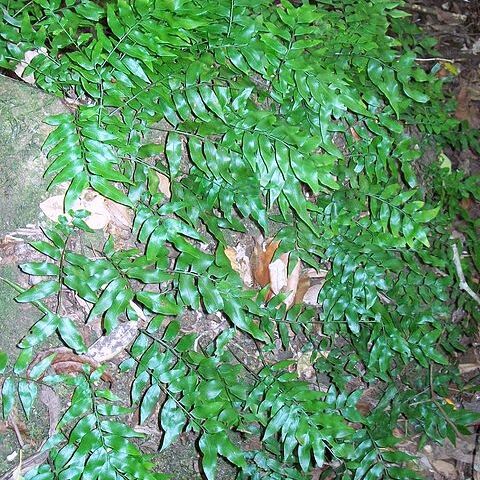Plants terrestrial, epilithic, or epiphytic. Rhizome long, creeping, erect, or scandent; scales blackish brown, thick, spreading or appressed, imbricate, peltate at base, margin often long ciliate. Fronds distant or clustered; stipe articulate to raised phyllopodia; lamina simple, entire, lanceolate to linear-lanceolate, herbaceous, papery, or leathery, margin cartilaginous, glabrous or pubescent; costa prominent, raised adaxially, often with small scales on abaxial surface; veins simple or forked, free. Sori in a single often irregular row on either side of costa; indusia persistent, red-brown, reniform or orbicular-reniform, membranous or papery. Spores monolete, with broad, winglike, echinulate folds, cristate or echinate to erose.
Terrestrial or epiphytic plants or sometimes on rocks. Rhizomes erect or creeping, dictyostelic, with peltate scales, sometimes producing tubers

